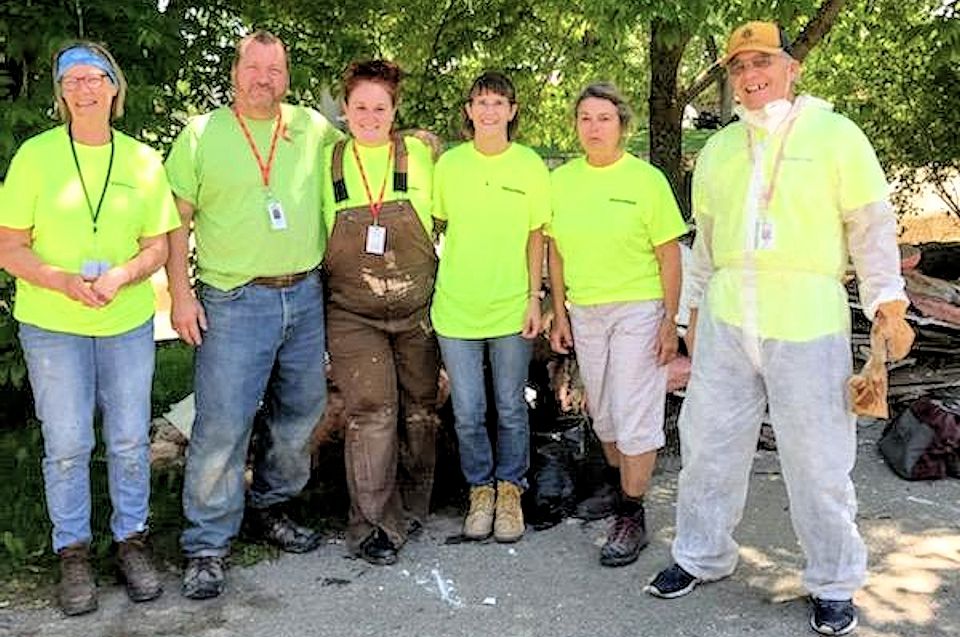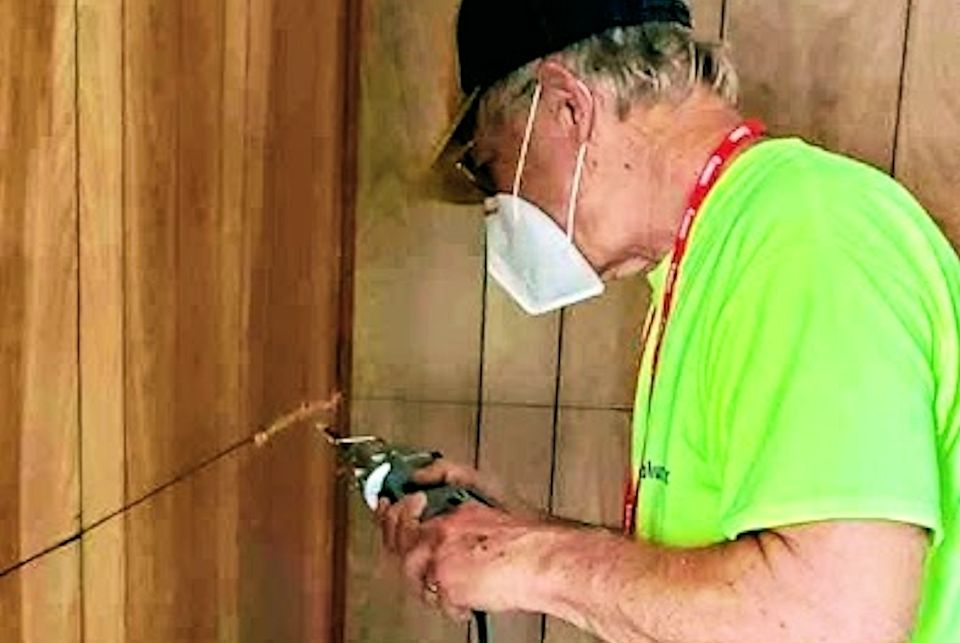Michigan United Methodists have been giving aid in the Great Lakes Bay Region since flooding occurred on May 19. Early Responders lay the foundation for the months of recovery efforts to follow.
June 8, 2020 | GLADWIN, Michigan — It has been three weeks since heavy rains fell, and dams burst in the Great Lakes Bay Region. Michigan United Methodists, led by Conference Coordinator for Disaster Recovery Ministries, Nancy Money, have been on the scene since Day One. Leaders have networked with other relief agencies to assess the damage and begin long-term strategies for support of the nearly 6,000 households affected by the flooding. Volunteers arrived from around the state to pitch in with mucking out and caring for teams at the sites.

This eye-witness, hands-on report comes to us from Madeline Hutchison, leader of an Early Response Team (ERT), who had boots on the ground helping with flood clean-up last weekend.
“When we first arrived in the Gladwin area, the amount of devastation was staggering. Wixom Lake, which once held an estimated 26 billion gallons of water emptied in 45 minutes after the Edenville Dam breached. Piles of debris were found up and down the impacted streets, with homeowners scrambling to beat the growth of mold and other damaging consequences. Before the dam emptied, all of the homes surrounding the lake and channels had between 18 to 36 inches of water inside with noticeable interior waterlines from 48 hours of constant rain. “
Once the Edenville dam breached, the lake water emptied from the homes and went rushing towards Midland. A homeowner commented that the terrible irony of the disaster is that the dam breaching is what saved his home. If the dam hadn’t breached, his home, along with others on Grouse Street, would have been a total loss.

“We were tasked with visiting homes on two specific streets around Lake Wixom. We worked in conjunction with four other volunteer teams from various churches assessing the damage, providing a plan of action, and doing what we could to secure the homes from further damage. Many of the other volunteer groups were from the community or various church organizations in the area. Due to our team’s experience and Early Response training, we were prepared and assigned the task of demolition and mold treatment.
“Other teams, unfortunately, did not come equipped with the required PPE for the demolition of walls, sheetrock, and insulation, so we directed the other teams to work on moving furniture and items out of the home so that we could properly demolish the walls and remove the moldy insulation. It was also apparent that we were the only team that had any formalized training in disaster response work. Our training prepared us to collaborate with the larger groups, create a sufficient plan, and work together to help the homeowners quickly.
“We were about to complete the proper demolition of four homes during our day and half of work. Once the room was cleared of furniture, we cut and removed sheetrock and insulation to 48″ above the floor. This can be dangerous work because the walls and insulation had significant mold growth by this point in time. Through the teamwork of all volunteers involved, we were able to prevent these homes from continuing to incur mold damages and shine a little bit of light in a very chaotic time for these homeowners. For that, I will always be grateful for the opportunity to help this beautiful community.”
That’s a day in the life of an ERT member. Perhaps you will consider registering the next time ERT Training is offered in The Michigan Conference.
In the meantime, you may not be part of an Early Response Team, but The Michigan Conference is looking for dollars, supplies, and volunteers to fuel the effort that will likely go on for the next 18 months in mid-Michigan. Click here to contribute funding to the Michigan Conference Disaster Fund. And fill out the online survey that provides the Disaster Recovery Team with information on how you may be willing to assist in the future.
Last Updated on November 1, 2023

